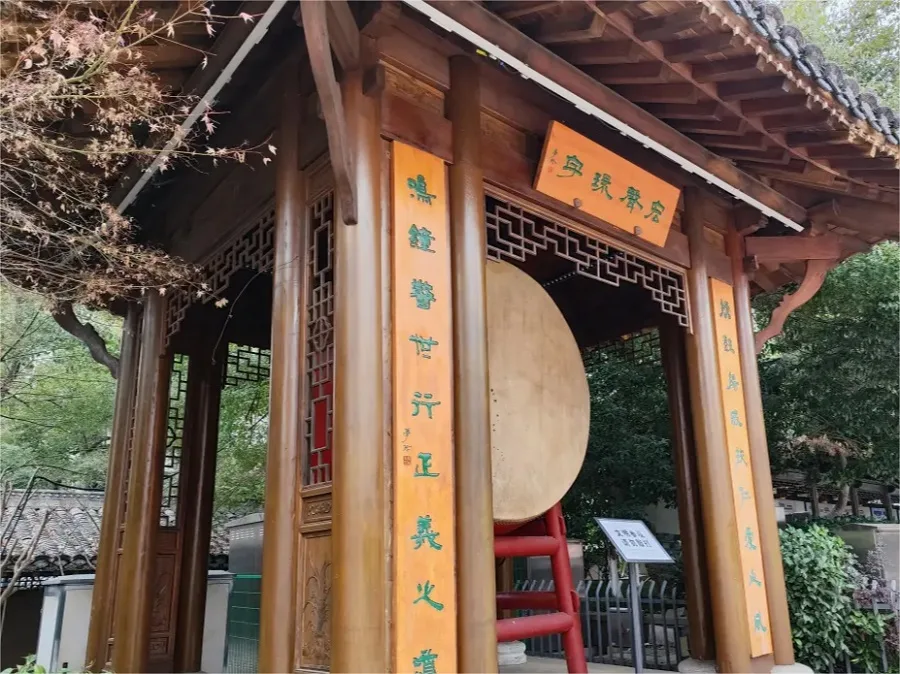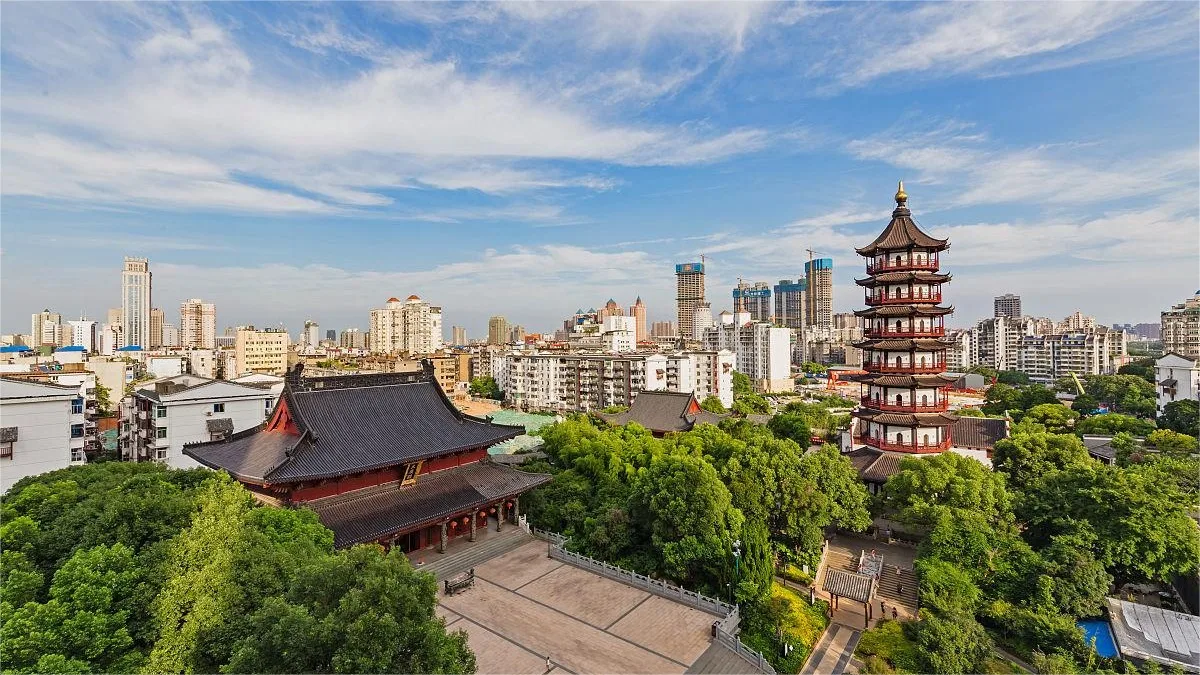Shengjin Pagoda (绳金塔), a significant architectural and cultural monument, stands as a beacon of history and spirituality in the Jiangnan region of China. Originally constructed during the Tianyou period of the Tang Dynasty (904–907), the current structure dates back to the 52nd year of the Kangxi reign in the Qing Dynasty (1713). The pagoda’s name, Shengjin, which translates to “Rope and Gold,” is derived from an intriguing legend. It is said that before the pagoda’s construction, a monk named Wei Yi unearthed an iron box containing four coils of golden rope, three ancient swords (each inscribed with the characters for “驱风 Drive Wind,” “镇火 Quell Fire,” and “降蛟 Subdue Dragon”), and a golden vase with 300 relics. This remarkable discovery lent the pagoda its auspicious name.
Table of Contents
- Basic Information
- Location and Transportation
- Architectural Splendor
- The Scenic Area
- Other Attractions in Nanchang Urban Area
Basic Information
| Estimated Length of Tour | 1 hour |
| Ticket Price | Free |
| Opening Hours | 8.30 – 17.00 |
| Telephone Number | 0086-0791-86406013 |
Location and Transportation
Shengjin Pagoda is located at the intersection of Zhanqian West Road and Shengjinta Street in Xihu District, Nanchang City, Jiangxi Province. Historically, it was situated outside the Jinxian Gate of the old Nanchang city. To get there, you can choose one of the following ways:
Bus: Take bus 2, 5, 18 Inner Line, 169, 221, 225, 230, 233, 258, or 259 and get off at Shengjinta Stop (绳金塔站).
Metro: THe closest metro station to the attraction is Shengjinta (绳金塔) on line 3 and line 4. After getting out of the station from Exit 3, you will be standing at the southern part of the scenic area.
Architectural Splendor

Shengjin Pagoda is a quintessential example of the brick-and-wood pavilion-style pagodas typical of the Jiangnan region. Standing at a height of 50.86 meters, the seven-story, eight-sided structure is notable for its striking red railings, blue-green tiles, black-cornered clean walls, and a gilded gourd-shaped top, all of which imbue it with a profound religious aura. The pagoda’s eaves are elegantly curved and adorned with hanging bronze bells, adding to its ethereal charm.
Each of the pagoda’s seven levels features four real doors and four false doors, arranged in a staggered pattern that varies in form across the floors. The first level is characterized by moon-shaped doors, while the second and third levels feature ruyi-shaped doors. The fourth through seventh levels are adorned with flame-shaped doors. This combination of door styles within a single pagoda is a rare architectural feat in China. The pagoda’s pinnacle rises three meters high with a maximum diameter of 1.75 meters. It is constructed with a camphor wood framework covered in 2–3 millimeter thick gilded copper plates. The proportions of each component are harmonious, and the lines are smooth and graceful, enhancing the structure’s aesthetic appeal.
The Scenic Area

The Shengjin Pagoda scenic area covers an expansive 30,000 square meters and is divided into four distinct sections:
- Mingjiang Garden: This area, dedicated to the renowned Qing Dynasty architect Lei Fada, spans nearly four acres and is planted with rare and precious flowers, plants, and trees. The garden is a tribute to Lei Fada’s contributions and a celebration of natural beauty.
- Folk Culture Village: Spanning 7.8 acres, this village has been reconstructed to resemble a traditional residence from the late Qing Dynasty to early Republic of China period. It offers a unique glimpse into historical folk customs and daily life. The village displays various traditional farming and living implements, such as plows, harrows, rollers, and water wheels, providing visitors with an immersive experience of the past.
- Confucius Temple: Located to the northeast of Shengjin Pagoda, this temple is a place for honoring Confucius and his disciples Yan Hui and Ziyu. It houses a complete set of musical instruments used in Confucian ceremonies, and its main hall walls are adorned with engravings depicting the life and deeds of Confucius.
- Longxing Courtyard: Situated to the northwest of the pagoda, this courtyard includes a stage and a teahouse where large-scale cultural performances are held during festivals and holidays. It regularly hosts performances by the provincial Peking Opera Troupe, the municipal Tea-picking Opera Troupe, and the municipal Song and Dance Troupe, offering visitors a rich cultural experience.








